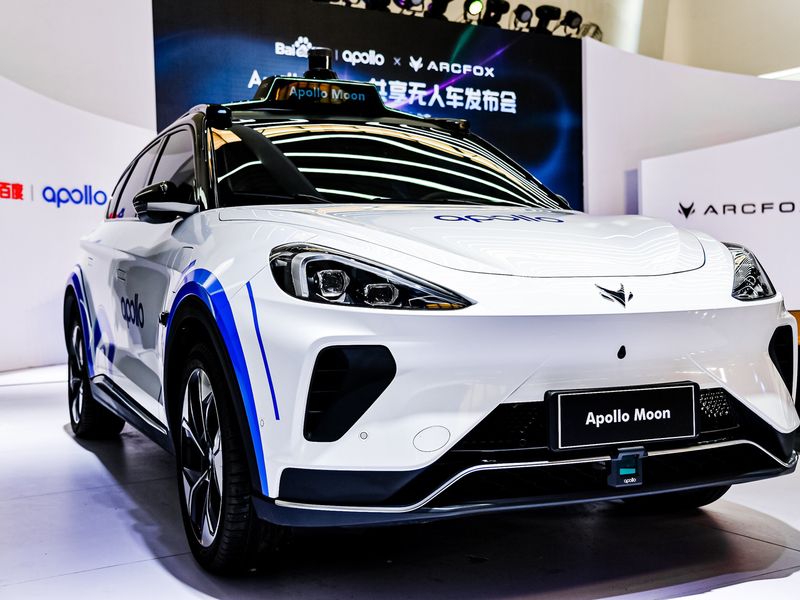
BAIC Motor Co.’s electric vehicle subsidiary, BluePark New Energy Technology Co., started mass production of robotaxis with domestic tech giant Baidu.
BluePark New Energy Technology, a Shanghai-listed company, disclosed the information Tuesday when taking queries from retail investors via an internet platform.
BluePark New Energy Technology declined to divulge additional details about the project.
The robotaxi program was first disclosed this year by Baidu, China’s largest internet search engine operator and leading autonomous driving technology developer.
Baidu said in June it was working with BluePark New Energy Technology to build and deploy 1,000 full electric crossovers as robotaxis with L4 autonomy over the next three years.
The robotaxi is adapted from BluePark New Energy Technology’s Arcfox-badged Alpha-T, a 5-seat midsize electric crossover, according to Baidu.
The vehicle is fitted with 2 lidars, 13 cameras, 5 millimeter-wave radars, 12 ultrasonic sensors, computing unit redundancy functions as well as a precise failure detector and degradable processing algorithms.
With mass production and scale, the manufacturing cost of the robotaxi could be lowered to 480,000 yuan ($75,470), Baidu said.
BAIC is not the only Chinese automaker producing robotaxis with domestic technology companies.
SAIC Mobility, the mobility arm of SAIC Motor Corp., last week began trial operation of 20 robotaxis in Jiading, a suburban district of Shanghai.
The robotaxis, developed on SAIC’s R-badged Marvel electric crossovers, are equipped with L4 self-driving technology developed by Momenta, a Chinese autonomous driving startup.
.
SAIC plans to test the robotaxis in two other Chinese cities – Suzhou and Shenzhen in the near future. It expects to increase the number of robotaxis in trial operation in Shanghai, Suzhou and Shenzhen to 200 by the end of next year.
Momenta CEO Cao Xudong told Chinese media last week the growing cooperation between self-driving technology developers and automakers, along with the prospect of mass production, is a motivating factor that will help commercialize self-driving technology with thousands of robotaxis to be built and placed in operation.

